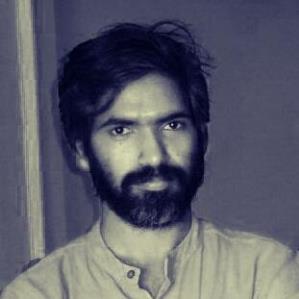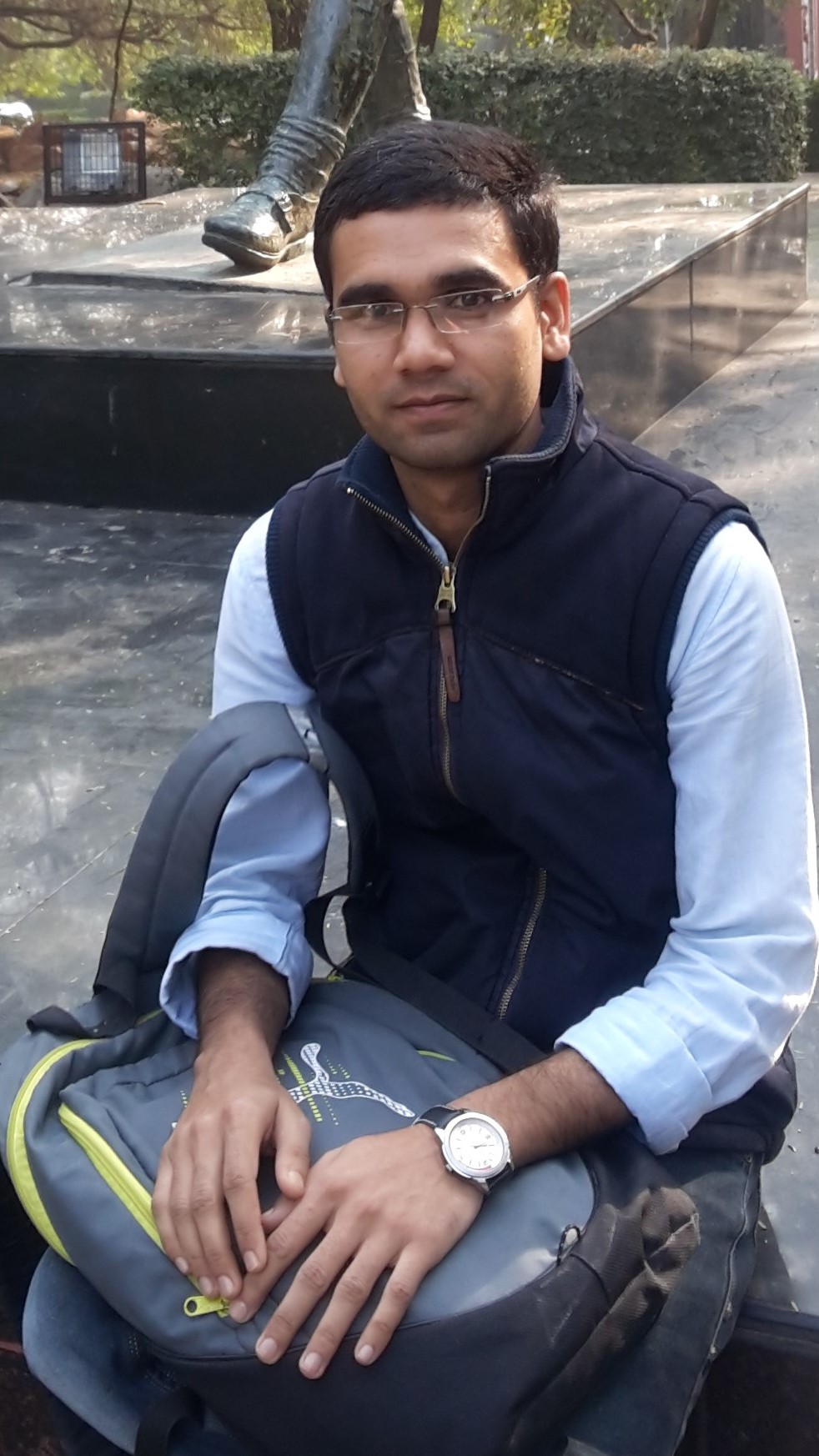Dhamma Darshan Nigam

We Dalits, we Ambedkarites, again and again, need to remember what Babasaheb Ambedkar means to us. We shall never get sidetracked from the path and vision which Ambedkar gave to us. ‘Annihilation of Caste’ is the principle which lays a foundation for a society based on equality and justice, and also develops in people an intense interest to fight tirelessly against the oppression and to get their rights. Two other principles with which we shall always abide by are ‘Educate, Agitate, Organize’ and ‘Liberty, Equality, Fraternity’. Dalits have also constructed different images of Ambedkar that continuously keep them on Ambedkar’s path and vision. And this path and vision lead Dalits to live a rational and moral life. Let’s look at these images.
Ambedkar as Maha Manav (a great man)
Dalits see in him as extraordinary, unmatchable, with unusual moral and intellectual qualities that set him apart from ordinary people such as his acquisition of numerous academic degrees that would be almost impossible for anyone else to get. His supreme sacrifices, both personal and familial, made in the course of his lifelong campaign for liberation of Dalits and backward classes from Hindu framework at both social and political level changed the flow of history in Dalits’ favor, and placed him as Maha Manav among his people. Another reason why Dalits necessarily construct Ambedkar as Maha Manav is because non-Dalit society failed to give him due recognition which they disproportionately gave to other ‘intellectually much inferior’ national leaders of his time, and instead of recognizing him as a Dalit leader nationally, restricted him as a Mahar leader. So by continuously celebrating Ambedkar as Maha Manav, Dalits construct him as ‘Vishwa Ratna’ (Universal Gem) not just ‘Bharat Ratna’ (Indian Diamond), and fill the ‘cultural discrepancy’ which caste Hindus widen continuously. This image of Ambedkar empowers Dalits culturally (Guru 2008: 207-09).
Ambedkar as Messiah
Dalits see in Ambedkar a Messiah who rescued them from their age-old pain, and social oppression, a task in which every other Dalit leader and mainstream political party failed. For these Dalits, intellectual wealth is much more important than material wealth; this also places Ambedkar with Buddha as a new spiritual/intellectual force in Dalit homes, replacing Hindu gods. This Messiah image can also be found interestingly from folk songs in rural Maharashtra, where women ‘invoke Ambedkar as the Messiah for saving them from exploitation by their dreadful mother-in-law’ (Guru 2008: 209).
Ambedkar as Modernist
Dalits all over India also see Ambedkar as a perfect modernist, an enlightened thinker, and a constitutionalist—architect of the constitution. He is seen as being committed to Dalit emancipation and academic scholarship with unparalleled moral stamina which he got by his devotion towards social commitment. This image of Ambedkar, with all practical reasons, keeps inspiring Dalits to secure a better future. Dalits treat Ambedkar’s collected work of twenty-one volumes (high on moral standards) as their cultural capital (which they had been denied), and found it necessary for their own emancipation, either through education or Ambedkar iconography. Iconography does not end at placing Ambedkar’s picture or statue in one’s home or in public parks but this continuously reminds Dalits of his moral and rational philosophy. The statue of Ambedkar here and there gives Dalits strength for fighting for their rights, all over India. The book in Ambedkar’s hand inspires Dalits to achieve the same level of scholarship, while a finger of the right hand pointing towards sky suggests the limit and also the efforts to change their fate. Many times Ambedkar’s icon also works as a defense mechanism because at many places and government offices “upper castes” will not take the risk of touching Dalits’ god. Though, Ambedkar did not support any kind of iconography, as it was against his rational and scientific thinking (Guru 2008: 210-13).
Ambedkar’s image with coat, shirt, tie, shoes, fountain pen and a book in his hand (Indian constitution) depicted a westernized man. Zelliot notes that ‘the portrait or statue shows a man serious, determined, and proud. The personality which Ambedkar presented with that elitist image was arrogant, caustic, aggressive, determined’ (Zelliot 1996: 59). ‘Ambedkar’s western dress and his independent critical temperament underlined the new identity he sought for the Mahar’ (Zelliot 1996: 61). The words like arrogant, caustic and aggressive need not be taken in a negative sense because without being such one cannot move against the tide. He was a man of action. He gave his people a radical, modern and dignified life.
Ambedkar as Prophet
Lynch (2009) in his study of Jatavs of Agra found that Jatavs regarded Ambedkar as a Prophet. Lynch notes that Ambedkar’s charisma was so strong that in spite of being from a different region, and with different language and caste, he was not only accepted and made a cultural hero of the Agra Jatavs but wholeheartedly deified, and was ‘elevated to the rank of the Buddhist pantheon as a Bodhisattva’ (Lynch 2009: 106). Lynch notes four socio-cultural components that provided Ambedkar’s charismatic personality a prophetic image in an alien land: 1) the cultural, 2) the historical, 3) the structural, and 4) the symbolic. Culturally, Jatavs saw Ambedkar as a religious reformer who talked against caste differences, like Kabir and Ravidas, who were still followed by Jatavs. Historically, Jatavs at the time of Round Table Conference supported Ambedkar’s position over Gandhi’s, and also sent him telegrams of support. Jatavs’ emotional connection with Ambedkar only got strengthened with every visit of Ambedkar to Agra. Structurally, Jatavs saw in Ambedkar ‘one of our own men’. Jatavs in Agra also supported conversion to Buddhism by doing the same. Lastly the symbolic charisma of Ambedkar lies in the fact that Jatavs identified with Ambedkar and his deeds and accomplishments. For Jatavs, Ambedkar understood what it meant to be an untouchable, and provided them a liberated and enlightened path to walk on. For Jatavs, Ambedkar was a god. All these socio-cultural components reinforce each other and collectively establish Ambedkar as a Prophet for Jatavs in Agra (Lynch 2009: 106-10). And it was due to Ambedkar’s charisma that he became the fourth jewel in Buddhism and thus three refuges became four.
Buddham saranam gacchami (I go for refuge to the Buddha)
Dhammam saranam gacchami (I go for refuge to the Dhamma [doctrine])
Sangham saranam gacchami (I go for refuge to the Sangha [order of monks])
Bhimam saranam gacchami (I go for refuge to Ambedkar)
(Zelliot 1996: 224).
Ambedkar through conversion, paved a way for his people for annihilation of caste, freed them from the exploitative Hindu religion, and provided them an egalitarian-scientific-rational religion—Buddhism. This way Ambedkar first fulfilled the spiritual and religious need of Dalits and then the unquenchable appetite for self-respect and dignity.
And then Ambedkar has taken a form of Mother also in Waman Kardak’s poem ‘Mother Bhim’
Mother Bhim
All the children of Mother Bhim.
I weave the garland of unity.
Built the nest again.
Oh become a friend of Waman.
On the stem of the heart
engrave the name of Bhim,
live happily here in unity.
Waman Kardak
(Zelliot 1996: 290)
For C.M. Wagh Ambedkar is Spartacus, Socrates, Aristotle and what not?
Lord Beema
The Emancipator-Spartacus
The Philosopher-Socrates
The Law-giver-Aristotle
The Orator-Demosthenes
The Samson of Intellect
The Nation’s Architect
The New-epoch Builder
Lincoln-Lenin-Ambedkar
C.M. Wagh
(Zelliot 1996: 54)
Like the above images of Ambedkar (Maha Manav, Messiah, Modernist, Prophet, Mother, and Lord) there must be many more images of Ambedkar all across the country which surely must have been inspiring Dalits (and others) to walk the path he gave—to have a dignified living and to fight for rights. We shall make Ambedkar part of our daily discussions and writings—a part of our daily life. And the sooner Ambedkar reaches all the oppressed sections this country, the faster they will raise the consciousness of dignified beings and free themselves from all types inequalities and oppression.
~
Notes
1. Guru, Gopal. 2008. ‘Understanding Multiple Images of B. R. Ambedkar.’ In Manu Bhagavan
and Anne Feldhaus (eds), Speaking Truth to Power: Religion, Caste and the Subaltern Question in India. New Delhi: Oxford University Press.
2. Lynch, M. Owen. 2009. ‘Dr. B.R. Ambedkar – Myth and Charisma.’ In J. Michael Mahar
(ed.), The Untouchables in Contemporary India. Jaipur: Rawat Publications.
3. Zelliot, Eleanor. 1996. From Untouchable to Dalit: Essays on the Ambedkar Movement. New Delhi: Manohar Publishers.
This essay is an extracted section from the author’s M.Phil dissertation (Dalit Identity: From Ambedkar to Mayawati).
~~~
Dhamma Darshan Nigam is an active member of the ‘Safai Karamchari Andolan’ and a writer. He can be contacted at: ddnigam@gmail.com










